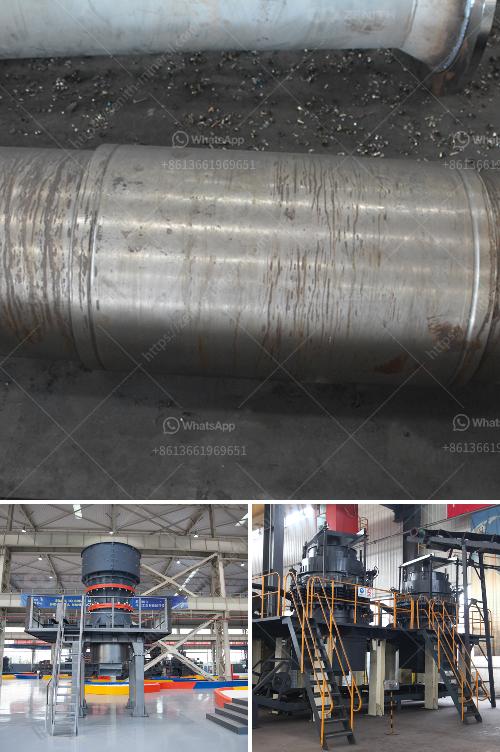A Raymond mill, also known as a Raymond roller mill, is a type of grinding mill used to grind materials into extremely fine powder for use in various applications, including the mining, construction, and chemical industries. The structure of a Raymond mill is quite intricate and consists of several key components that work together to achieve the desired grinding effect. Here is a detailed breakdown of the main components and their functions:
The main frame is the foundational structure of the Raymond mill. It supports all the other components and ensures the stability and rigidity of the entire machine. The main frame is typically made of cast iron or steel to provide the necessary strength and durability.
The grinding roller assembly is a crucial part of the Raymond mill. It consists of several rollers that rotate around a central axis. These rollers are mounted on a shaft and are pressed against the grinding ring by centrifugal force. The grinding rollers crush and grind the material fed into the mill.
The grinding ring is a circular component that surrounds the grinding rollers. It provides the surface against which the rollers press to grind the material. The grinding ring is usually made of high-strength steel or other wear-resistant materials to withstand the constant abrasion from the grinding process.
The plum flower frame is a structural component that connects the grinding rollers to the main shaft. It ensures that the rollers are evenly spaced and properly aligned with the grinding ring. The plum flower frame also helps distribute the grinding force evenly across the rollers.
The main shaft is a vertical shaft that runs through the center of the Raymond mill. It is driven by a motor and transmits the rotational force to the grinding rollers and other components. The main shaft is typically made of high-strength steel to handle the mechanical stresses involved in the grinding process.
The classifier is an essential component that controls the fineness of the final product. It is located at the top of the Raymond mill and consists of a series of blades or vanes that rotate at high speed. The classifier separates the fine particles from the coarse ones, allowing only the desired fine powder to pass through while returning the coarse particles to the grinding chamber for further grinding.
The feeding system is responsible for introducing the raw material into the grinding chamber. It typically consists of a hopper, a feeder, and a conveyor belt. The feeder regulates the flow of material into the mill, ensuring a consistent and controlled feed rate.
The air blower is a critical component that provides the necessary airflow to carry the ground material through the mill and into the classifier. It creates a high-pressure air stream that helps transport the fine particles out of the grinding chamber and into the collection system.
The cyclone collector is a device that separates the fine powder from the air stream. It uses centrifugal force to collect the fine particles and direct them into a storage bin or bag. The cyclone collector ensures that the final product is free of dust and other impurities.
The control system is an electronic system that monitors and regulates the operation of the Raymond mill. It includes sensors, controllers, and display panels that provide real-time information about the mill's performance. The control system allows operators to adjust various parameters, such as the feed rate, grinding pressure, and classifier speed, to optimize the grinding process.
The structure of a Raymond mill is designed to achieve efficient and precise grinding of materials into fine powder. Each component plays a vital role in the overall operation of the mill, and their proper functioning is essential for achieving the desired grinding results. Understanding the structure and function of each component can help operators maintain and optimize the performance of the Raymond mill.
